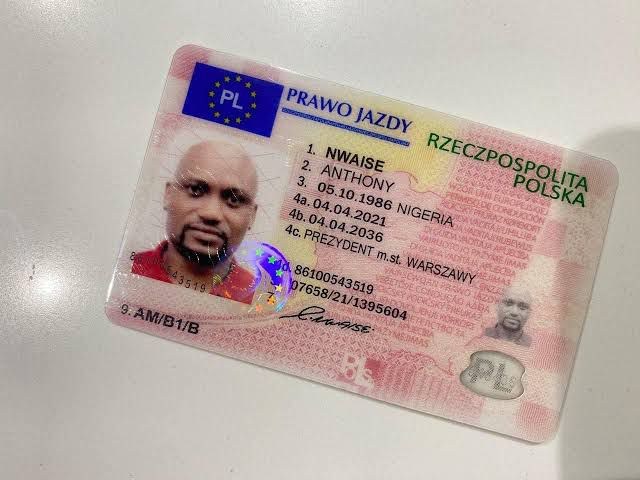Driving Licenses B Tips From The Most Effective In The Industry
Understanding Driving Licenses: Types, Requirements, and Frequently Asked Questions
Driving is an essential element of modern life, and obtaining a driving license is a critical milestone for many individuals. This short article checks out the numerous kinds of driving licenses offered, the requirements to obtain them, and responses commonly asked concerns related to the subject. An educated perspective on driving licenses can assist individuals comprehend the significance of picking the correct type of license to satisfy their needs.
Types of Driving Licenses
Driving licenses can differ between nations and areas, but they typically fall into several significant classifications. alyshewitt.top following table sums up the most typical kinds of driving licenses, including their functions and common restrictions.
Kind of License
Description
Typical Restrictions
Eligibility Age
Learner's Permit
Allows beginner drivers to practice.
Must drive with a licensed adult.
16-18 years of ages
Class C License
Requirement license for guest lorries.
No limitation on number of passengers.
18 years or older
Class A License
Industrial license for big cars.
Must adhere to stricter policies.
21 years or older
Class B License
For driving buses and larger automobiles.
May need special endorsements.
21 years or older
Motorbike License
For running motorbikes.
Should use a helmet; differs by state.
16-18 years old
International License
Allows legal driving in foreign nations.
Must possess a legitimate domestic license.
18 years or older
Student's Permit
The learner's permit is the primary step for many individuals venturing into the world of driving. This authorization allows novice motorists to practice driving under monitored conditions, usually needing a licensed adult over a certain age to accompany them in the car.
Class C License
The Class C license is the most frequently held driving license, allowing people to operate standard guest vehicles. This license usually has fewer limitations compared to other categories.
Class A and B Licenses
Class A and B licenses are necessary for running business cars. These licenses require special training and screening, guaranteeing that chauffeurs are equipped with the skills required for navigating larger and more complicated cars safely.
Motorcycle License
People interested in riding motorcycles need to obtain a motorcycle license, which can need extra training and screening. Security equipment, such as helmets, is often mandated by law.
International License
An international driving license allows people to drive in foreign nations, but it is crucial to have a legitimate domestic driving license in combination with the global authorization.
Requirements to Obtain a Driving License
The requirements for getting a driving license can vary significantly by jurisdiction. Nevertheless, there prevail steps and requirements that the majority of applicants will encounter. Below is a list of general requirements:
Age Requirement:
- Minimum age varies; student's permits are typically released at 16, while full licenses might need applicants to be 18 or older.
Vision Test:
- Most jurisdictions need candidates to pass a vision test to ensure safe driving capabilities.
Composed Test:
- New drivers need to pass a written exam that covers traffic laws, roadway signs, and safe driving practices.
Driving Test:
- Practical driving tests are conducted to show a candidate's ability to run a lorry securely under different conditions.
Costs:
- Payment of application and screening charges is generally required.
Proof of Identity:
- Applicants should offer valid recognition, such as a passport or birth certificate, in addition to proof of residency.
Parental Consent (for minors):
- Parental or guardian authorization is frequently required for candidates under the age of 18.
Comprehending the various types of driving licenses and their involved requirements is important for anyone looking to drive lawfully and securely. Each license serves a distinct function, dealing with numerous driving requirements, from basic lorries to commercial transport and bikes. By satisfying the needed requirements and adhering to policies, aiming drivers can delight in the freedom of driving while guaranteeing their safety and the safety of others.
Regularly Asked Questions (FAQs)
What do I require to bring when requesting a driving license?
- You typically need to supply recognition, proof of residency, and any required application fees. Talk to your local DMV or licensing authority for specific requirements.
The length of time does it take to get a driving license?
- The timeline can differ based upon specific situations, such as how rapidly one can finish the needed tests, and whether there is a backlog at the licensing authority.
Can I drive with a learner's permit?
- Yes, however you need to be accompanied by a certified motorist and stick to restrictions set by your regional laws.
What takes place if I stop working the driving test?
- You generally have the alternative to retake the test after a designated waiting duration, which varies by jurisdiction.
Is it required to take a driving course?
- While not constantly necessary, taking a motorist's education course can be helpful and is typically required for individuals seeking a student's permit.
By being notified about the kinds of licenses offered, the requirements essential for getting one, and the related regulations, prospective motorists can browse the procedure of obtaining a driving license with confidence.
